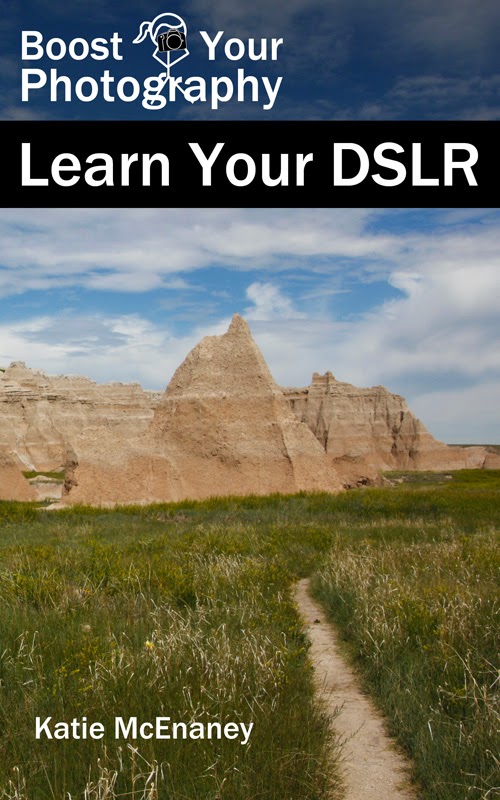This month'sBoost Your Photography: 52 Weeks Challenge is focusing the different creative shooting modes available on your camera: program mode, shutter priority mode, aperture priority mode, andfull manual mode

Aperture Priority Mode
Aperture Priority mode allows you to set the aperture and ISO for your camera, and it will choose a corresponding shutter speed, based on its calculation of the correct exposure. (Read more about correct and creative exposure in the articleAll about Exposure or about ISO in ISO Basics.) Aperture priority mode is usually abbreviated as A on your shooting mode dial.The aperture (or opening) of your camera lens controls the amount of light that enters your camera and impacts the depth of field (how much of your photograph is in focus). A wide open aperture (like f/1.8) captures a lot of light but relatively little of the photograph will be in focus, while a narrow, closed down aperture (like f/22) captures far less light but much more of the photograph will be in focus.
Looking to learn more about aperture?
- Aperture Scale
- Aperture and the F/Stop Conundrum
- What an Aperture of F/1.8 Can Do for You
- What the Middle Range Apertures Can Do for You
- What an Aperture of F/22 Can Do for You
Common Situations to Use Aperture Priority Mode

Creative Bokeh Photography
Bokeh photography requires a wide open aperture. You want to keep your subject relatively close to the camera and your background (or background lights) farther away for the best bokeh effect. Read more in All about Bokeh.

Portraits
Portrait photographers often use aperture priority mode and shoot at the wider end of the aperture spectrum. This creates a blurred background look that focuses attention on your subject. When working with a thin depth of field, it is important to make sure that your focus is spot on. Read more in Portrait Photography Basics and Top Tips for Photography Portraits and Posing.

Indoor or Low-Light Photography
Aperture priority mode can also be useful when shooting indoors or in other low-light situations. Setting a wide aperture allows your camera to constantly choose the fastest available shutter speed, especially if lighting situations are changing while you are shooting.

Starbursts and Sun Flares
Starburst effects and sun flares are created by using a narrow aperture like f/22. The number of points on the star are impacted by the number of aperture blades inside your camera. Try it out with different lenses to see what kinds of effects you can capture. Read more about Using Sun Flares and Starbursts to Create Stunning Images.

Waterfalls
Waterfall photography can also benefit from using a narrow aperture like f/22. This forces your camera to choose the longer shutter speed possible, giving the composition and conditions. Longer shutter speeds create the smooth, flowing water effect that can make for memorable waterfall shots. Read more in Yes, Go Chasing Waterfalls.
Shoot in Aperture Priority Mode
This week your challenge is to try shooting in aperture priority mode. Try one of the situations above or another photography subject. Shoot a range of photographs across the aperture spectrum to really see how controlling aperture can help you get the shot you want.Share a link or a photograph in the comments below, or consider joining the BYP 52 Weeks Google+ Community to share your weekly photograph and see what others are capturing.

Boost Your Photography: Learn Your DSLR is available from Amazon. Get the most out of your camera with practical advice about the technical and creative aspects of DSLR photography that will have you taking beautiful pictures right away.
No comments:
Post a Comment